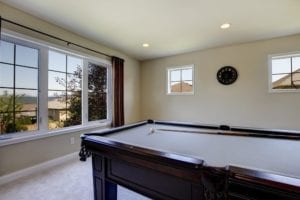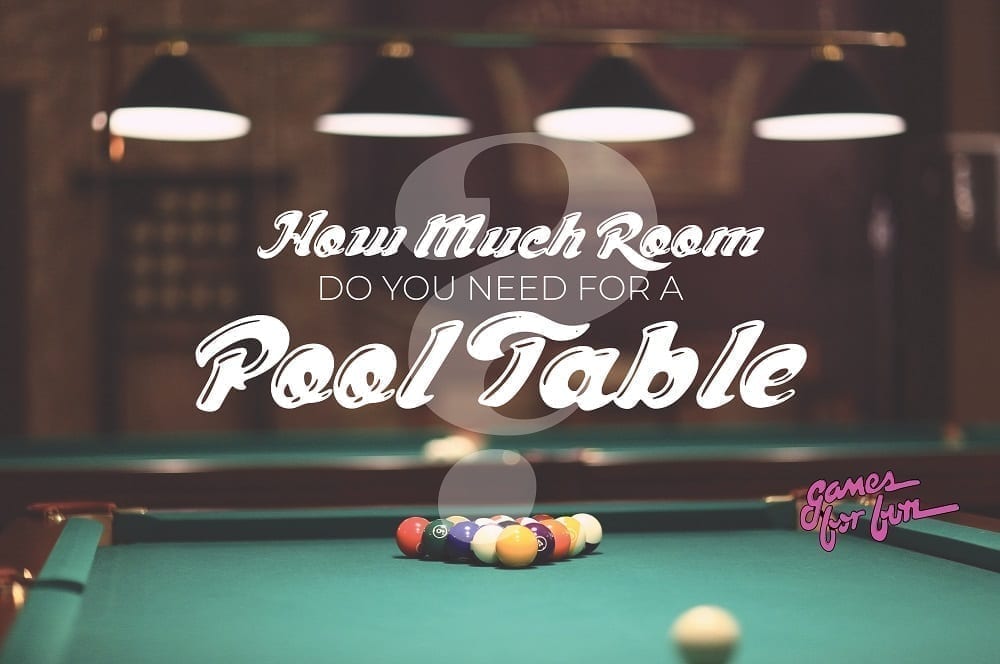
You come home with a shiny new pool table on which a game has never been played. It’s regulation size, fully accessorized, and ready for some serious play. What’s not ready, however, is your non-regulation sized basement. You and your fellow pool sharks are faced with a four-walled obstacle. You squeeze around the sides, practice yoga moves with every shot, and are in too close of proximity one another’s cues. And when the excitement of your new game dissipates, you’re left with an over-crowded table that no one wants to use. Waste of money, huh? So, make sure that you have enough room for your table!
Regulation size:
When one considers a regulation size pool table, they often imagine the 4 ½ ft. by 9 ft. tournament table. However, it can also refer to tables that are merely twice as long as they are wide. And most people have a “Home Eight†in their homes, or an 8 ft. by 4 ft. table. So, as you prepare to make way for your new table, keep in mind the size of your purchase and its relation to your available space.
Measuring your space:Â
The first step in selecting and purchasing your pool table should involve measuring the area in your home. And remember, it will not suffice for just your pool table to fit. You must consider the pool cues and players that will have to fit around the table, as well. So, consider how close the butt of your cue is to the wall while you’re playing. Will it touch or get too close with any particular angle? Imagine how each scenario might affect your game.
A general rule of thumb:

Although this chart accounts for cue pieces that are 58†long, you may consider using a short cue for smaller spaces as long as it is not under 48â€.
What if there’s an obstruction?Â
Several large rooms, especially on lower levels, will have a load-bearing beam or pole. In this case, you can set up your pool table, so this obstruction is positioned on its side rather than on the end. This is beneficial as most shots are taken from the rack end of a pool table. Plus, for break shots, the cue ball can be repositioned to avoid whatever may be in your way. You might even consider buying a shorter cue, which comes as small as 36 inches, for the times when you can’t get around an obstruction. And if you’re dealing with an especially obtrusive barrier, you might invest in a few different sized cues, so you have options for its length.
Accessories:Â
What’s a pool room without its accessories? Things like a rack for your cues, scorers, and a place for spare balls are must-haves in your billiard room. But they often take up a significant amount of space. So, to conserve room, look for a combination score-keeper and ball tray. These features can be found in several varieties of the floor-standing and wall-mounted cue racks. Plus, they’ll not only serve as space savers in a busy room, but they’ll add some decor as well!
Make your billiard room a welcoming and enjoyable space for all. And remember, there are always options for accommodations in the case of obstructions and limited space. When you’re in the market for a high-quality, affordable, and long-lasting pool table, make sure to evaluate your needs and investigate your options. And if you don’t know where to start, do not hesitate to give us a call! We at Games for Fun are prepared to help you find the table that’s right for you! Reach out today!


